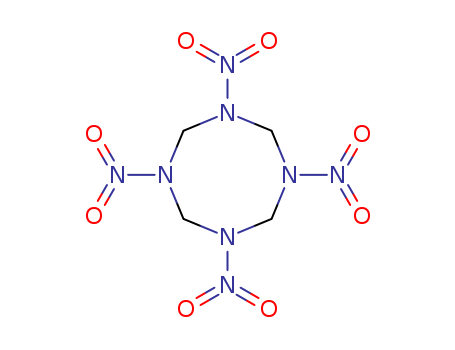- Chemical Name:Octogen
- CAS No.:2691-41-0
- Deprecated CAS:121631-13-8,141615-54-5,5222-46-8,66038-26-4,66745-90-2,97956-01-9,141615-54-5,5222-46-8,66038-26-4,66745-90-2,97956-01-9
- Molecular Formula:C4H8 N8 O8
- Molecular Weight:296.156
- Hs Code.:29339900
- European Community (EC) Number:220-260-0
- ICSC Number:1575
- UN Number:0226
- UNII:LLW94W5BSJ
- DSSTox Substance ID:DTXSID3024237
- Wikipedia:HMX
- Wikidata:Q422206
- Metabolomics Workbench ID:54855
- Mol file:2691-41-0.mol
Synonyms:1,3,5,7-tetranitro-1,3,5,7-tetraazacyclooctane;beta-1,3,5,7-tetranitro-1,3,5,7-tetraazacyclooctane;cyclotetramethylene-tetranitramine;cyclotetramethylenetetranitramine;HMX;octahydro-1,3,5,7-tetranitro-1,3,5,7-tetrazocine;octogen




 T
T F
F

